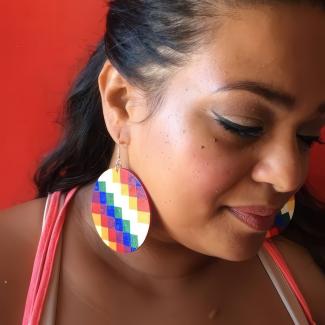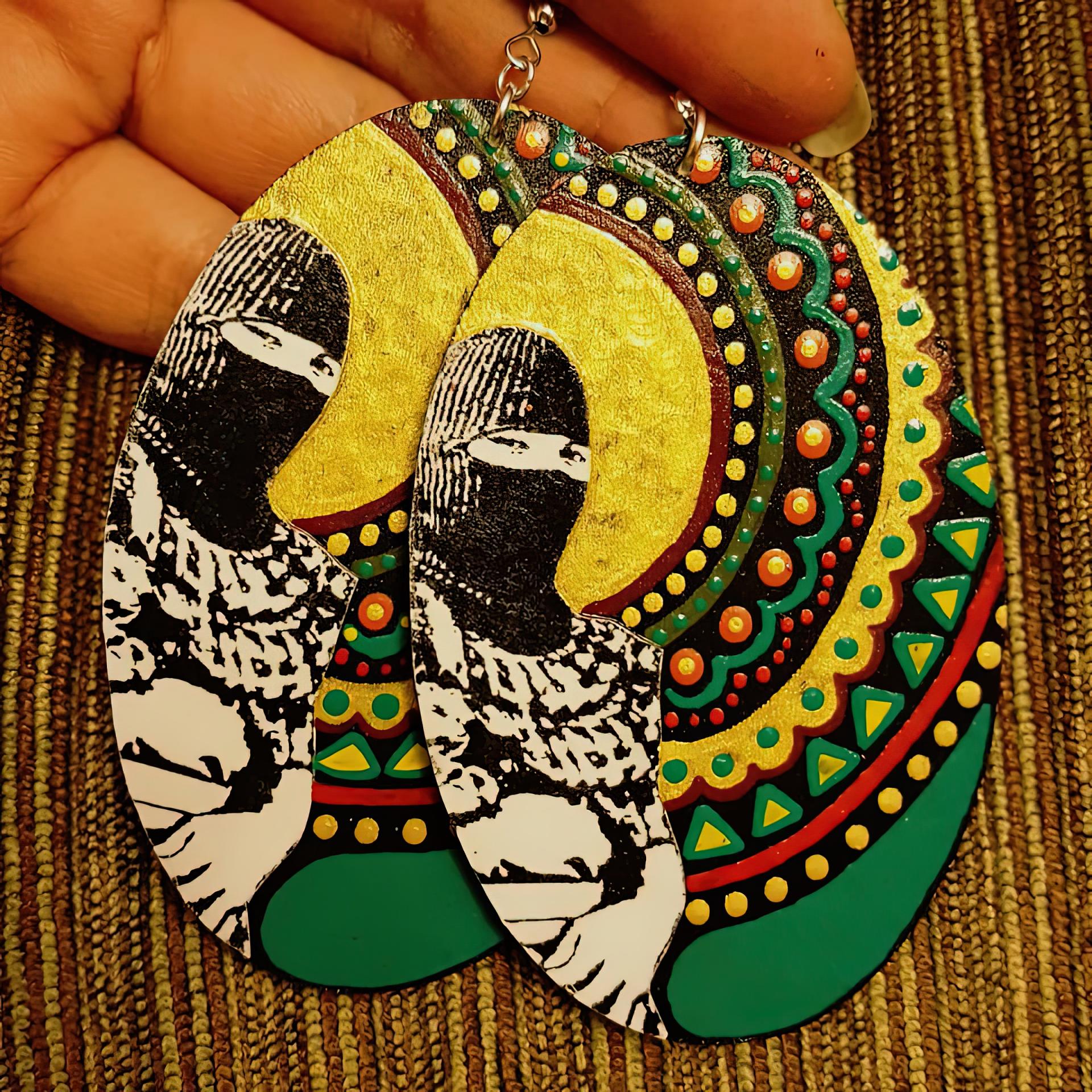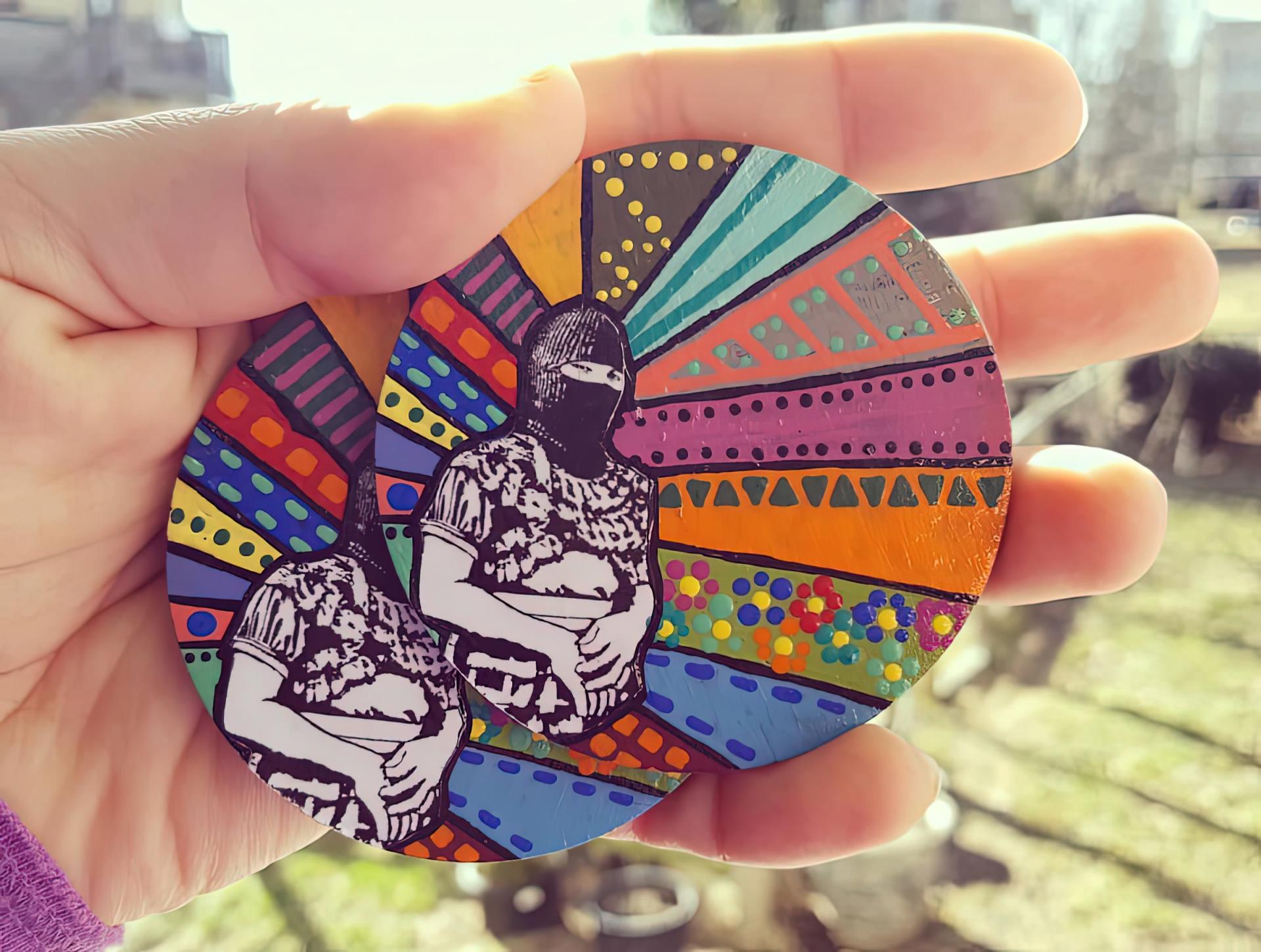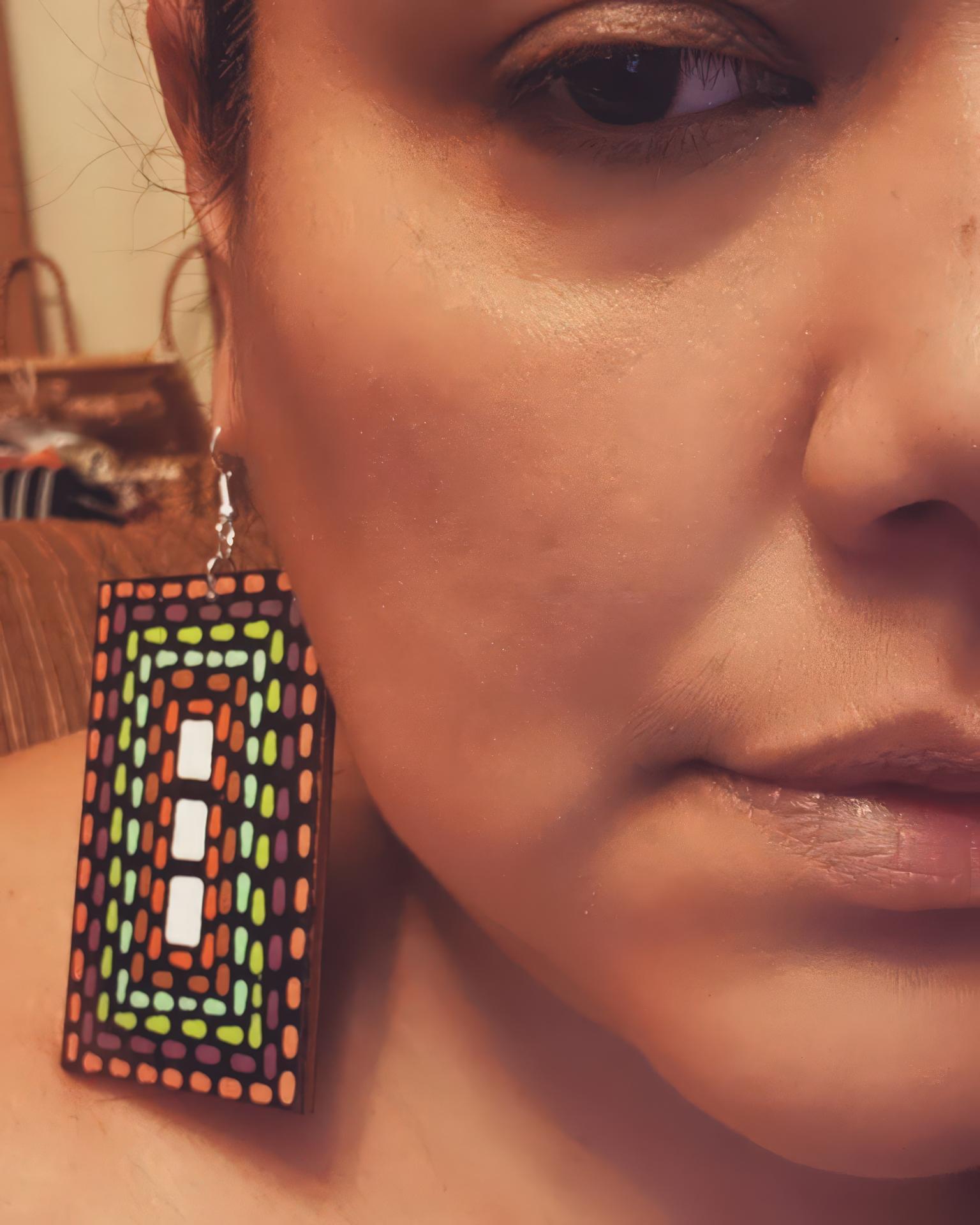
In every sense, Tarin Andrea Gonzalez (Mapuche) is diasporic Indigenous pride, resistance, and joy. Born and raised in the late 1970s to Chilean Mapuche and Diaguita parents who fled the military dictatorship, Gonzalez has spent her life forging and redefining Mapuche life in the Bronx. Her Mapuche identity was first cultivated in her home, and today she reclaims this identity as a jewelry maker based in New York.
Living Mapuche identity far from the homelands, Gonzalez says she feels the pain of diasporic displacement, and that her art navigates an ongoing resistance against both historical and present-day colonialism as it is upheld in Chile and New York. As a child, she loved to paint and considered herself “crafty.” In adulthood, she found her love for jewelry making in the community organizing space. “I started [making earrings] as a hobby and as a way to decompress from a stressful workday,” Gonzalez recalls. “I used to run a food pantry in a community center—I grew up going to food pantries with my family as a kid. When I got this job, I remember asking my mom, ‘How would you like a food pantry to be run?’ and I started running the pantry as if it were my home, a space that was welcoming. If the women wanted to sit and chit chat and gossip, they could do that in my space . . . and then I started making earrings in that process.”

Gonzalez began to see that her jewelry-making had not just been a hobby, but a practice embedded within her own family. “My grandmother was someone who made things. She sold socks. She washed the wool and she would make socks and go down to the tourists at the beach to sell them. Because I’m from the Bronx, I thought, ‘Oh, she was a hustler! I’m a hustler just like my grandma.’[Similarly], my mom has this incredible sense of plants and seeds. My Grandma was a curandera in our community. She used plant medicine, and my mom carried that on.”
In creating wearable art in the form of jewelry, Gonzalez began to feel that love exponentially, especially in seeing the individuals who supported her creativity and starting conversations with them. “People send me pictures of them wearing my art, and I think, ‘oh my God! Look at my art, look at my creations, look at where they are!’ I really love that. I love when people share their stories with me. Being an artesana has given me freedom, the sovereignty and independence that I needed. After years of working for nonprofits, I can now do and say what I want and support or partner with whom I want. The money I receive is not tied to anything I don’t support,” she says.

Within each earring is much labor and love, which emerges in conversations when she sells her work. “I want to tell [people] how I made this, what I was thinking when I made it. Maybe it came from a dream . . . it is important for [the buyer] to know that, because it transfers energy. I’m working with wood, I’m working with leather, I’m working with things that had a life at some point.”
Gonzalez’s jewelry is composed of materials sourced from other Native artisans and contains both implicit and explicit statements about her experience in the Bronx in community organizing and activism; it was in the activist space that her art blossomed into wearable statements declaring solidarity with Indigenous Peoples globally. “When I started to create my art, I wanted to bring the flavor of the Bronx and of being an activist—I was making statement pieces. People wear regalia, these beautiful adornments. It makes a statement of who you are and who your people are. That’s what I do with my jewelry,” she says, adding, “I feel so honored to be a vendor at Cultural Survival because I feel seen. I am seen by my counterparts as an Indigenous artist, and that feels amazing.”

Don't miss the Cultural Survival Bazaars! July 19–20: Newburyport, MA, July 25–27: Tiverton, RI, bazaar.cs.org
All photos courtesy of Tarin Andrea Gonzalez.
